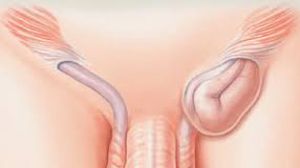Laparoscopic Myomectomy and Ovarian Cystectomy for Multiple Myomas and Paraovarian Cyst
Add to
Share
3,572 views
Report
Description
Laparoscopic Ovarian cystectomy and Laparoscopic myomectomy are the two most frequently performed gynecologic operations in reproductive-age women. Benign ovarian cysts mostly occur in reproductive-age women, for whom it is important to have the majority of the ovarian tissue preserved after laparoscopic surgery. In order to preserve the maximum ovarian reserve, laparoscopic ovarian cystectomy is generally preferred. The lifetime incidence of uterine myoma is approximately 20% to 25%, and it is the most common benign tumor in reproductive-age women. Laparoscopic Surgery is performed on women who suffer from menorrhagia, dysmenorrhea, or increase in the size of the fibroid. The utility of laparoscopic myomectomy has been well established among symptomatic reproductive-age women with myoma, and previous studies have found no difference in the duration of surgery, the amount of blood loss during surgery, or the incidence of postoperative adhesion in comparison with open surgery. Likewise, no difference was found between laparoscopic myomectomy or open myomectomy in the rate of postoperative uterine rupture. In infertile patients, myomectomy has been shown to lead to a significant improvement in the pregnancy rate. Currently, single-port access (SPA) laparoscopic myomectomy is performed as a minimally invasive surgical technique. SPA laparoscopic surgery is superior to multi-port laparoscopic surgery in terms of cosmetic outcomes and postoperative pain relief and recovery, but due to the difficulty in the suture technique, hemostasis is more challenging and it generally is more time-consuming.
Similar Videos






